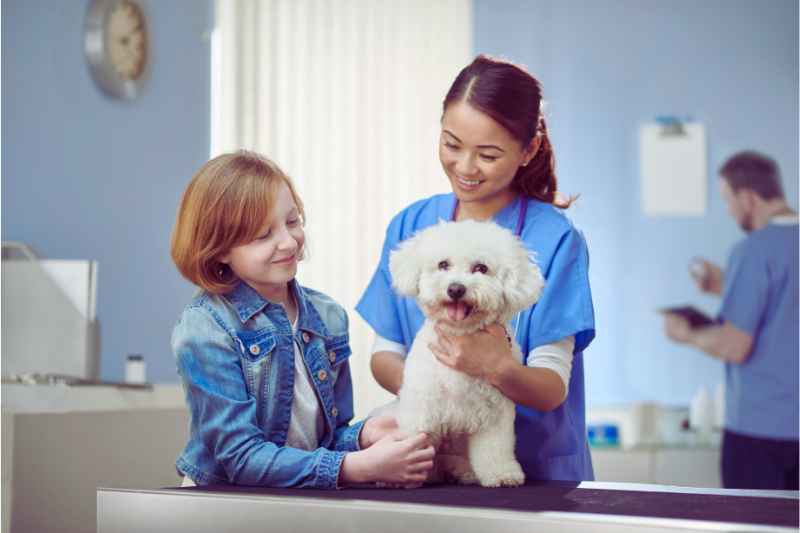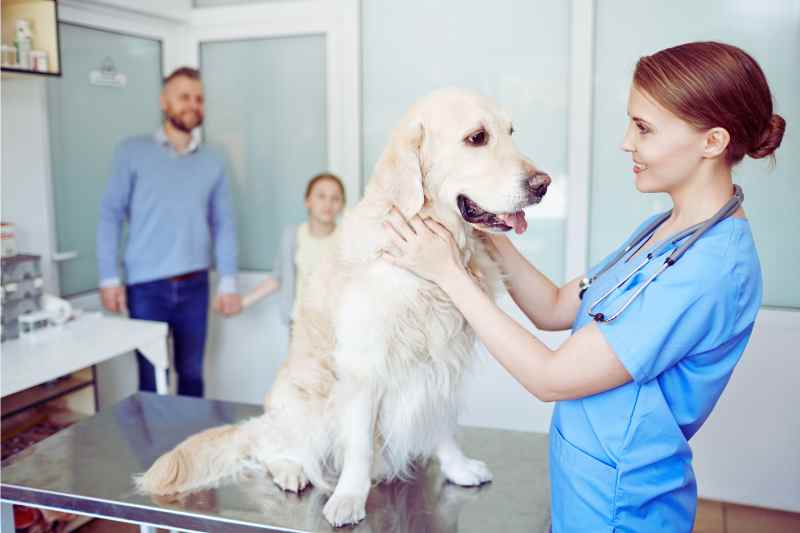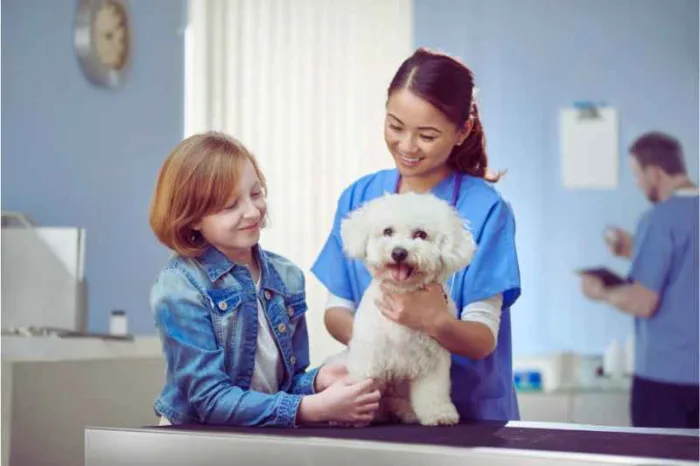Key takeaways
- Security concerns for your veterinary clinic include medication storage, patient files, equipment theft, and keeping pets overnight.
- Additional security hardware for animal hospitals includes motion sensor lights, alarms, guards, and security cameras.

When it comes to the healthcare and hospital access control industry, animal hospitals and veterinary clinics are often overlooked when it comes to security. However, just because the patients are domestic animals doesn’t mean they don’t deserve the same level of protection as we do. As we’ll explore in this post, animal hospital security protects clinics from some of the same threats as those faced in a hospital.
In this post, we’ll provide you with a look at the best animal hospital access control systems. Next, we’ll review the specific security concerns for your clinic. Lastly, we’ll review additional security systems for veterinary clinics that integrate well with one another.
This post:
- The best animal hospital security system
- What are some specific safety concerns in a clinic setting for vets?
- Animal hospital security cost
- Other animal hospital security features to consider
- Animal hospital security FAQs
The best animal hospital security system
ButterflyMX is the best animal hospital security system with a full suite of cloud-based access control products. In fact, our products have been installed in over 15,000 properties and have over 40,000 five-star reviews.
In addition to veterinary clinics, ButterflyMX can be used in healthcare facilities as diverse as dentist’s offices. The best part about our products is that everything we offer is easy to use. As a result, very little animal hospital security training will be necessary for your staff members.
The best security products that will specifically work for an animal hospital are as follows:
Security Cameras
ButterflyMX Security Cameras offer the best security solution for animal hospitals by combining advanced technology with features tailored to the unique needs of your veterinary care facilities.
Here are some key features and benefits of our comprehensive Security Camera System:
- Enhanced security and convenience. Our ButterflyMX Security Cameras can be integrated with our Access Control System, allowing you to monitor and control access to sensitive areas like operating rooms, kennels, and medication storage rooms.
- Reliable and durable. Our Security Cameras are designed to withstand the rigorous demands of a veterinary environment, including potential exposure to harsh chemicals, frequent cleaning, and high-traffic areas.
- HD video and night vision. Capture clear, high-definition footage 24/7, ensuring you can monitor your animal care facility and guarantee security even in low-light conditions.
- Weather and tamper-resistance. Built to endure both indoor and outdoor conditions, our cameras are ideal for monitoring entrances, outdoor kennels, and parking lots, providing peace of mind no matter the weather.
- PoE technology. Simplify installation and reduce clutter with Power over Ethernet (PoE), which allows a single Ethernet cable to supply both power and data, making it easier to secure various parts of your facility.
- Full property visibility. With Dome and Bullet Camera models, you can achieve comprehensive coverage across your entire animal hospital, ensuring that all critical areas are monitored effectively.
- ONVIF compatibility. Our cameras are ONVIF compatible, ensuring seamless integration with existing security systems and streamlining communication between different devices.
Keypads and Readers
Our Keypad is perfect for securing off-limits areas such as operating rooms, staff-only quarters, rooms where overnight guests are kept, and places where you store equipment and medication. If you prefer a keyless entry system, we enable mobile access through the ButterflyMX app. By tapping a single button, they can unlock the door for entry.
Additionally, our Keypad can be opened with a unique PIN code that is assigned to each user, and their entry can be logged whenever they use it. Furthermore, the Keypad can provide temporary PIN codes to visitors that expire after a set time period. Keycards and key fobs can even be used.
What’s more, our Keypads keep a time- and date-stamped log of all entry events, which will allow you to closely monitor and manage your property.
Vehicle Readers
Depending on the size of your parking area, you might want to designate a staff-only parking lot or parking garage. Furthermore, you might want to secure the parking area around your property with a gate. Either way, our Vehicle Reader is easy to use. First, we provide you with RFID window tags that can be placed on all designated vehicles. Next, all the driver has to do is drive up to the Vehicle Reader, which will scan the window tag and provide access.
This will allow your staff to always have parking spaces. Furthermore, staff members will feel safe walking to their car once only authorized vehicles are allowed in the parking area.
Elevator controls
If you have a larger facility with an elevator, then you will definitely need our Elevator Controls. You’ll likely have certain floors for specific purposes, and you might not want guests or untrained staff members on these floors. Our Elevator Controls require specific access credentials for each floor.
The biggest benefit of Elevator Controls is that everybody gets to where they need to be going without any delay, while access is restricted for unauthorized users.
Learn how to set up access groups at your animal hospital when using ButterflyMX:
What are some specific safety concerns in a clinic setting for vets?
While animals are sweet, fuzzy, and inherently kind, people are not, and they’ll remain your biggest safety concern in a clinical setting for vets. More than 56% of American households own a pet. As a result, animal hospitals can easily become very hectic places with a need for security protocols.
Specific safety concerns at an animal hospital include:
- Animals receiving long-term care. Your security system needs to be able to keep animals within your facility just as importantly as keeping trespassers out. Additionally, you will need a system that allows for visitors so that owners can see their sick loved ones.
- Medication storage. There are a lot of medications at your facility that are at risk for theft or misuse. These can be a major safety risk.
- Unverified visitors. Many pets are valuable (and we don’t just mean sentimentally). It’s up to you to make sure nobody walks away with a Frenchie. Furthermore, many animals can be agitated when confronted with strangers. Make sure to limit the number of people who see animals under your care for the sake of their emotional well-being.
- High staff turnover. As with every other field in healthcare, there is high staff turnover. It’s important to make sure that former staff members no longer have access to your facility’s restricted spaces.
- Emotional pet parents. People are at an animal hospital on their worst day, and they are often emotionally distressed. With a good security system, your staff will have the tools to de-escalate situations and provide some much-needed reassurance to clients.

What must a veterinarian safeguard in the confines of the law?
The biggest thing a veterinarian must safeguard in the confines of the law is medical information and patient confidentiality. Practically, this might not seem like a big deal because patients are animals and not people, but legally, this doesn’t matter.
While HIPAA doesn’t include veterinary clinics like it does hospitals, some states require veterinary clinics to keep patient files confidential. As a result, you should closely monitor your state’s laws and regulations. A good access control system, such as a keypad, will secure staff-only areas where medical information is kept.
Animal hospital security cost
The cost for animal hospital security depends on a number of different factors. The size of your facility, the number of staff members that you have, and how many patients you see on a daily basis will all play a factor in determining the cost. Prices can range from $500 to over $10,000, so it’s important to do your research on what your facility needs first.

Other animal hospital security features to consider
Animal hospitals have a surprising amount in common with nursing homes. They’re meant to keep patients from wandering away from the facility, there are a lot of visitors and medical equipment that needs to be accessible yet secured, and they have more than one security system.
In addition to our ButterflyMX products, you might want to implement other security features. Everything listed below integrates well with ButterflyMX.
Other veterinary security systems include:
- Security guards. A living, breathing person can de-escalate an emotional situation peacefully and make staff and patients feel protected.
- Cameras. Camera systems can cover blind spots in your facility and help people feel secure.
- Motion-sensor lights. Proper lighting is an underlooked security feature. Make sure your parking lots and the sides of your building are well-lit.
- Alarm systems. An alarm system can alert you to a break-in (or break-out). Alarm systems can have multipurpose features that also detect leaks, gasses, and smoke.
Animal hospital security FAQs
Here are some commonly asked questions about animal hospital security:
- What is the most common safety hazard in veterinary medicine?
- Why are animal hospitals so expensive?
- Does OSHA apply to veterinarians?
- What ergonomic hazards could you be exposed to while working in the veterinary industry?
What is the most common safety hazard in veterinary medicine?
The most common safety hazard in veterinary medicine is animal handling. Veterinarians and staff are frequently exposed to the risk of bites, scratches, and other injuries while working with animals.
However, with proper animal hospital training, the use of protective equipment, and effective restraint techniques, your staff can significantly minimize these risks.
Why are animal hospitals so expensive?
Animal hospitals can be expensive due to the specialized care and advanced technology required to diagnose and treat pets.
Moreover, costs include highly trained veterinary staff, state-of-the-art medical equipment, medications, and surgical procedures. Additionally, animal hospital management must adhere to strict hygiene and safety standards, all of which contribute to the overall cost of care.
Does OSHA apply to veterinarians?
Yes, the Occupational Safety and Health Administration (OSHA) regulations apply to veterinary practices. In fact, veterinary clinics and hospitals must comply with OSHA standards to ensure a safe working environment for employees.
This includes proper handling of hazardous materials, safe animal handling practices, and adherence to ergonomic guidelines.
What ergonomic hazards could you be exposed to while working in the veterinary industry?
In the veterinary industry, workers may be exposed to ergonomic hazards such as repetitive motion injuries, strain from lifting heavy animals, and awkward postures during procedures.
To mitigate these risks, it’s important to use proper lifting techniques, ergonomic equipment, and take regular breaks to prevent overexertion.

Learn more about ButterflyMX
Fill in the form below, and we'll email you right back.
Have questions?
Fill in the form below, and we'll email you right back.






